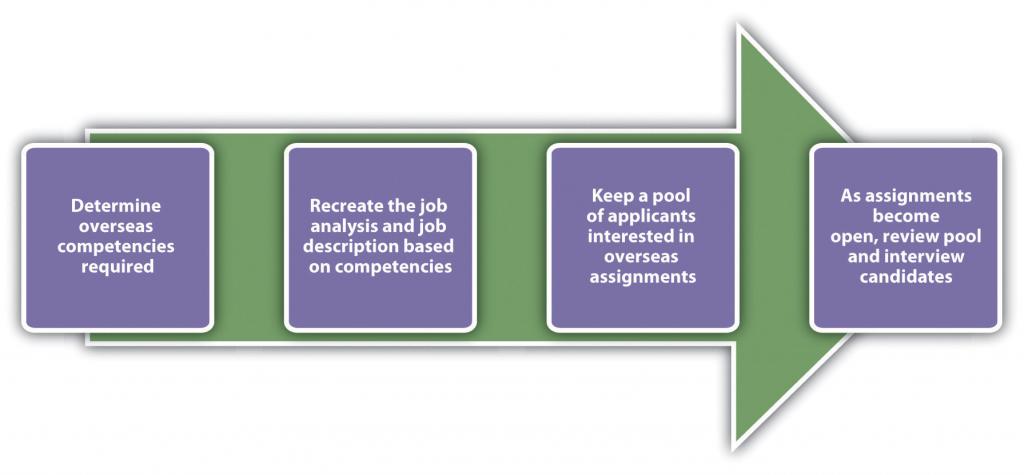14.3: International HRM Considerations
- Page ID
- 8297
Learning Objectives
- Be able to explain how the selection process for an expatriate differs from a domestic process.
- Explain possible expatriate training topics and the importance of each.
- Identify the performance review and legal differences for international assignments.
- Explain the logistical considerations for expatriate assignments.
In an international environment, as long as proper research is performed, most HRM concepts can be applied. The important thing to consider is proper research and understanding of cultural, economic, and legal differences between countries. This section will provide an overview of some specific considerations for an international business, keeping in mind that with awareness, any HRM concept can be applied to the international environment. In addition, it is important to mention again that host-country offices should be in constant communication with home-country offices to ensure policies and practices are aligned with the organization.
Recruitment and Selection
As we discussed in Section 14.2 “Staffing Internationally”, understanding which staffing strategy to use is the first aspect of hiring the right person for the overseas assignment. The ideal candidate for an overseas assignment normally has the following characteristics:
- Managerial competence: technical skills, leadership skills, knowledge specific to the company operations.
- Training: The candidate either has or is willing to be trained on the language and culture of the host country.
- Adaptability: The ability to deal with new, uncomfortable, or unfamiliar situations and the ability to adjust to the culture in which the candidate will be assigned.
As we discussed earlier, when selecting an expatriate or a third-country national for the job, assuring that the candidate has the job factors, relational dimensions, motivational state, family situation, and language skills (or can learn) is a key consideration in hiring the right person. Some of the costs associated with failure of an expatriate or third-country national might include the following:
- Damage to host-country relationships
- Motivation of host-country staff
- Costs associated with recruitment and relocation
- Possible loss of that employee once he or she returns
- Missed opportunities to further develop the market
Because success on an overseas assignment has such complex factors, the selection process for this individual should be different from the selection process when hiring domestically. The process should start with the job analysis, as we discussed in Chapter 4 “Recruitment”. The job analysis and job description should be different for the overseas assignment, since we know that certain competencies (besides technical ones) are important for success. Most of those competencies have little to do with the person’s ability to do the job but are related to his or her ability to do the job in a new cultural setting. These additional competencies (besides the skills needed for the job) may be considered:
- Experience working internationally
- Extroverted
- Stress tolerance
- Language skills
- Cultural experiences
Once the key success factors are determined, many of which can be based on previous overseas assignments successes, we can begin to develop a pool of internal candidates who possess the additional competencies needed for a successful overseas assignment.
To develop the pool, career development questions on the performance review can be asked to determine the employee’s interest in an overseas assignment. Interest is an important factor; otherwise, the chance of success is low. If there is interest, this person can be recorded as a possible applicant. An easy way to keep track of interested people is to keep a spreadsheet of interested parties, skills, languages spoken, cultural experiences, abilities, and how the candidates meet the competencies you have already developed.
Once an overseas assignment is open, you can view the pool of interested parties and choose the ones to interview who meet the competencies required for the particular assignment.
Figure 14.3 Sample Selection Process for Overseas Assignments


